
Will Canada’s next prime minister support Indigenous Rights and conservation projects?
The Conservative and Liberal parties diverge sharply on Indigenous issues. Here’s what that could mean...
The people Canada relies on to ensure the West Coast trawl fishery is operating within the law are frequently subjected to threats and harassment, making it perilous for them to do their jobs. The result is millions of pounds of wasted fish and untold environmental impacts, a months-long investigation by The Narwhal has found.
Workplace abuse has led observers to under-report the adverse impacts of trawl fishing and resulted in an estimated 140 million pounds of wasted fish. Put another way, that’s $1 billion in unaccounted catch in just over two decades.
In 1996, Fisheries and Oceans Canada took the unprecedented step of closing the fishery for five months in the wake of years of over-harvesting.
B.C.’s bottom trawl fishery involves dragging a net through the water column or along the seabed, harvesting a variety of fish that live near the bottom of the ocean, including Pacific cod, hake, rockfish and pollock. The fishery was only permitted to reopen once it was guaranteed an independent observer would be stationed as a watchdog on each and every boat.
Yet an imperfect system means observers — whose reports could ultimately result in a shut down of a boat or even the entire industry — are vulnerable to intimidation from ship skippers and crew members who at times exercise pressure on individuals to under-report their findings or look the other way.
“It’s a very dangerous thing for observers to be out there,” said one observer, who spoke on the condition of anonymity. “You’re out there alone, often without cell service or contact.”
The Narwhal spoke with 11 current or former at-sea observers for this story. Many asked not to be named for fear of reprisal.
Under the at-sea observer program, observers are required to estimate bycatch on ships, often while mountains of fish are being dumped on deck and unwanted species are being thrown overboard. Observers are also expected to take biological samples and count and assess the condition of prohibited species, which can include valuable fish like halibut, all while staying out of the way.
In early April, Fisheries and Oceans Canada suddenly ordered the observers off the boats for 45 days due to safety concerns around COVID-19. But observers told The Narwhal they cannot safely and effectively perform their duties during normal times. The result is a fishery far less sustainable than the observer program is designed to guarantee.
“We’re totally destroying the [fisheries] for future generations. Completely,” Jon Eis, one of the whistleblowers, tells The Narwhal.
The testimony of observers, along with documents reviewed by The Narwhal, outline a system that is meant to protect and monitor a resource but instead rewards the actors most willing to break the rules.
During this investigation, Archipelago Marine Research, which provides all of the observers for the Pacific trawl fishery, instructed its employees not to speak with the media. Two Archipelago executives, Shawn Stebbins and Scott Buchanan, denied allegations that the company fails to protect its employees.
From the first net that was brought aboard the Raw Spirit in early December 2018, Eis knew he was on a collision course with the ship’s captain and co-owner, Kelly Andersen.
On this trip, the Raw Spirit was fishing for turbot — a roughly triangular, low-value bottom-dwelling fish — on the so-called 800 line, a productive fishing ground off the southern tip of Haida Gwaii.
Yet it seemed for every 10 pounds of turbot pulled in by net, one pound of halibut was caught up as well. Halibut, a sought-after species that sells for more than 10 times the price of turbot, was not on the shopping list; trawlers aren’t allowed to keep it.
The inconvenient bycatch could have spelled financial disaster for Andersen, who was legally required to report the Raw Spirit’s poundage of dead halibut. The vessel was a mere 5,000 pounds from being shut down for the year, Eis says Andersen and others on the ship told him — an outcome that could have cost the skipper hundreds of thousands of dollars.
According to Eis, the halibut on board were in bad shape. Four crew members were tasked with separating the halibut from the rest of the catch and throwing them overboard, but struggled to do so before the fish suffocated. Others lay mangled in the back of the net, crushed by the weight of fish piled against them during a long tow. But, dead or alive, it is standard practice for trawlers to throw prohibited bycatch back.
With thousands of pounds of turbot being caught, the halibut pounds, too, were adding up quickly.
Eis says Andersen reminded him of the ship’s annual halibut limit, which Eis perceived as a threat to not report beyond it. As the only observer aboard, it was Eis’s reporting that could get Andersen caught.
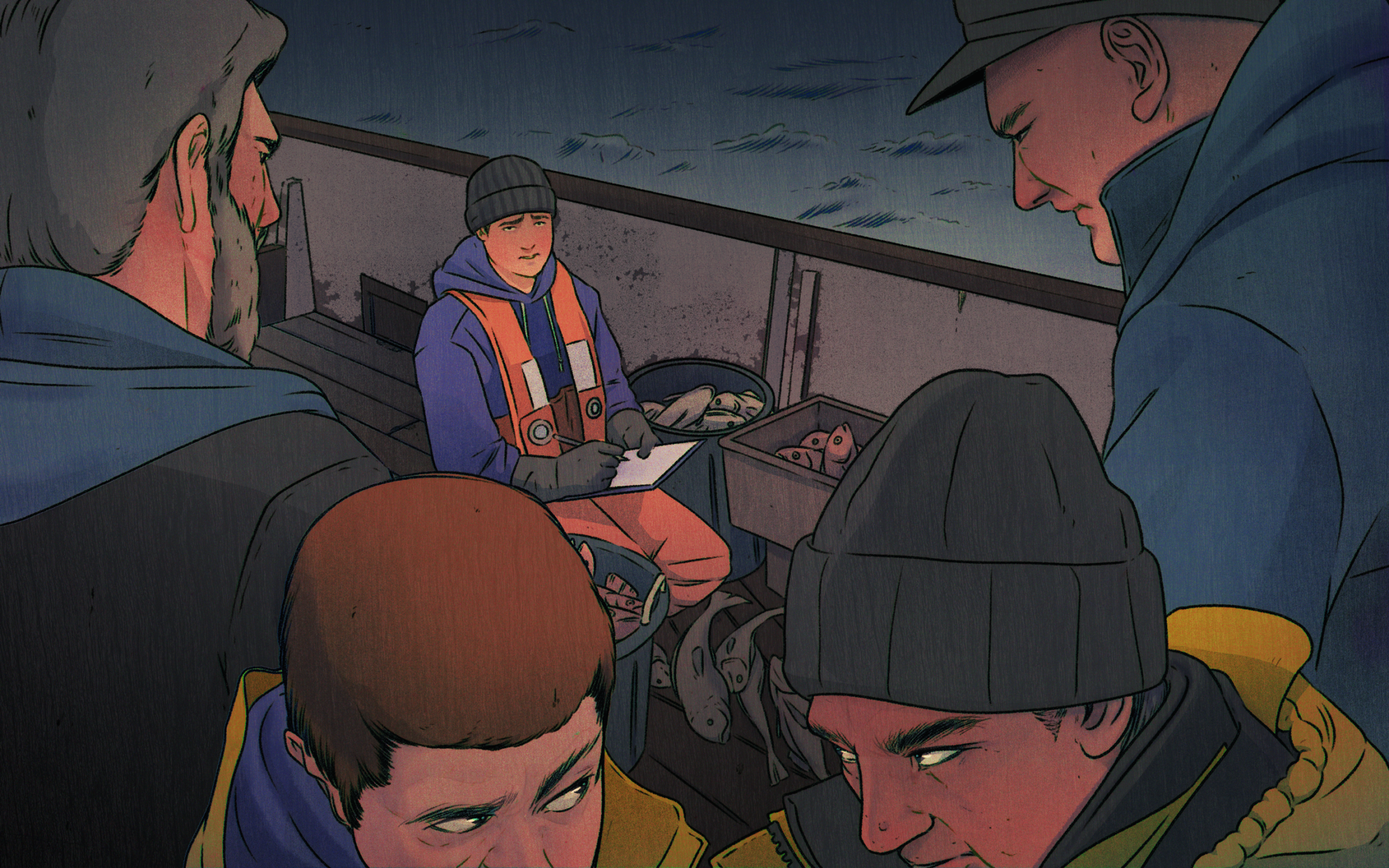
Fisheries observers are responsible for monitoring bycatch on industrial trawlers off the B.C. coast. Many of these individuals feel not enough is being done to protect them from intimidation and harassment while at sea. “It’s a very dangerous thing for observers to be out there,” one whistleblower told The Narwhal. “You’re out there alone, often without cell service or contact.” Illustration: Maria Nguyen / The Narwhal
The Raw Spirit was brought to Canada from Norway in 2013. Its arrival on the coast was part of a new wave of trawling in B.C., as factory trawlers are capable of catching more fish, more quickly and — because they can process and freeze as much as a million or more pounds of fish onboard — can stay at sea longer than the previous generation of vessels. The Raw Spirit’s purchase was a joint venture between Andersen, the Jim Pattison-owned Canadian Fishing Company and Fisher Bay Seafood co-owners Tracy Ronlund and Theresa Williams.
The net of a bottom trawler catches anything that can’t swim fast enough to escape, and its potential damage to habitat — rare glass sponges and corals are often damaged in the drag — means the trawl fishery has an outsized, if invisible, impact on the environment.
According to Scott Wallace, a research scientist with the David Suzuki Foundation, of all the ways humans interact with the natural environment on the B.C. coast, “the trawl fishery is the single biggest.”
Despite the high percentage of halibut bycatch and even with a storm approaching, Eis says Andersen kept hammering at the same spot for days.
Eis says he felt pressured and eventually wrote down that Andersen’s crew had discarded 12,800 dead-weight pounds of halibut. (Dead weight is calculated based on the condition of the fish when they’re thrown overboard. A fish that appears full of life counts for less dead weight than a fish that is clearly already dead — though, even dead fish are given up to a 20 per cent chance of recovery.)
The reality, Eis says, was that the Raw Spirit killed closer to 50,000 pounds of halibut in just three and a half days.
“I’m trying to write down 25 per cent of what we really killed, and the skipper is freaking out,” Eis says. He says Andersen called the Archipelago Marine Research office to try to have that number reduced further. Archipelago would not confirm or deny that such a phone call was made, citing confidentiality concerns.
Eis also says Andersen began a campaign of harassment toward him. He alleges Andersen became aggressive and threatening, yelling at him and “doing everything in his power” to make him change the number. Eis, who at that point had been an observer for 15 years, says he began locking the door to his cabin every night out of fear.
In an emailed statement to The Narwhal, Andersen says he regrets Eis’s “interpretation of his experience.”
The Narwhal followed up with two emails and a text message to ask for further comment, but Andersen did not respond to any other allegations raised in this story.
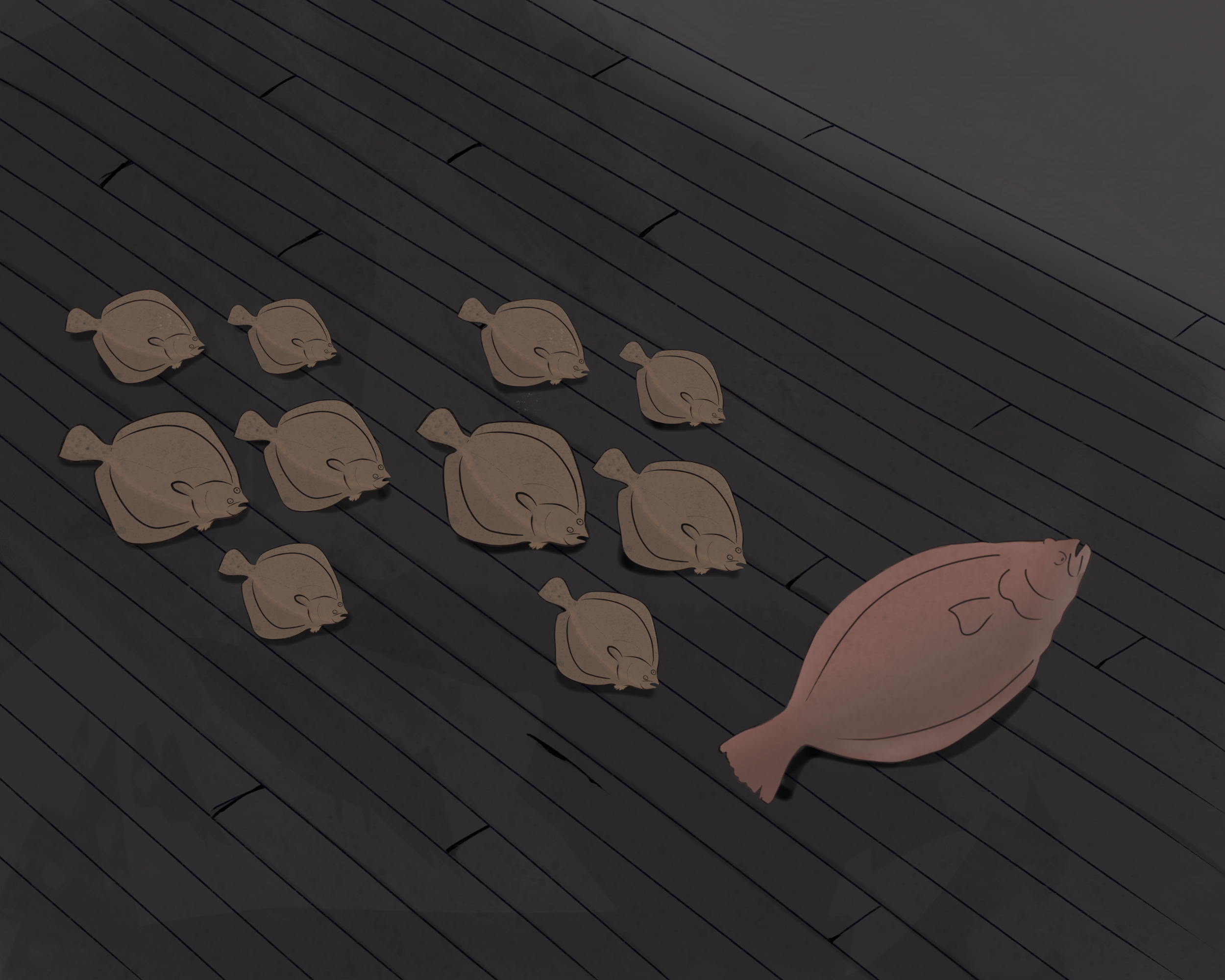
Trawlers are not permitted to catch halibut, yet often accidentally do so when dragging their nets for other species. Although halibut must be returned to the ocean, many do not survive their capture and release. Fisheries observer Jon Eis said, while aboard the Raw Spirit, he witnessed the destruction of 50,000 pounds of halibut in just three days. Illustration: Carol Linnitt / The Narwhal
Eis says he had experienced this kind of pressure before and estimates he regularly under-reported the waste of some species of fish, especially rockfish and halibut, by as much as 80 per cent.
As a fisheries observer, Eis was trained to combine his observations with statistics to make an educated guess about the bigger picture. So, asked for an estimate of how much waste he has seen go unreported in his 1,200 or so days at sea, Eis conservatively puts the figure at around three million pounds of fish — a number he says would have been several times higher had he not avoided factory trawlers whenever possible. (For comparison, B.C.’s total reported legal catch of black cod in 2017 was slightly over four million pounds; it was 8.4 million pounds for halibut.)
Multiplied over dozens of active observers in the Pacific throughout the duration of the observer program, that estimate could add up to well over 140 million pounds of unreported waste on top of the reported bycatch. That would be an additional “shadow” waste of more than B.C.’s legal combined annual catch of rockfish, wild salmon, halibut, black cod, herring and all wild shellfish. It would be more than a billion dollars in fish that has gone completely unaccounted for in just over two decades.
According to a 2016 global study conducted by University of British Columbia researchers with Sea Around Us, a fisheries research initiative, the impact of fisheries has been under-reported by about 50 per cent, meaning millions more tonnes of fish are being taken out of the oceans than official reports suggest. The same researchers estimated worldwide bycatch to be 10.3 million tonnes per year — although there is no accounting for bycatch that goes unreported.
Eis and other observers say under-reporting is pervasive throughout the industry. Their personal accounts signal the potential for B.C.’s bycatch figures to be far higher than previously thought.
Stebbins, Archipelago’s vice-president in charge of special projects, balked at the estimated volume of waste from the trawl industry, but agreed systemic under-reporting could be happening.
“I absolutely agree that could be a possibility,” he says. “It’s just common sense.”
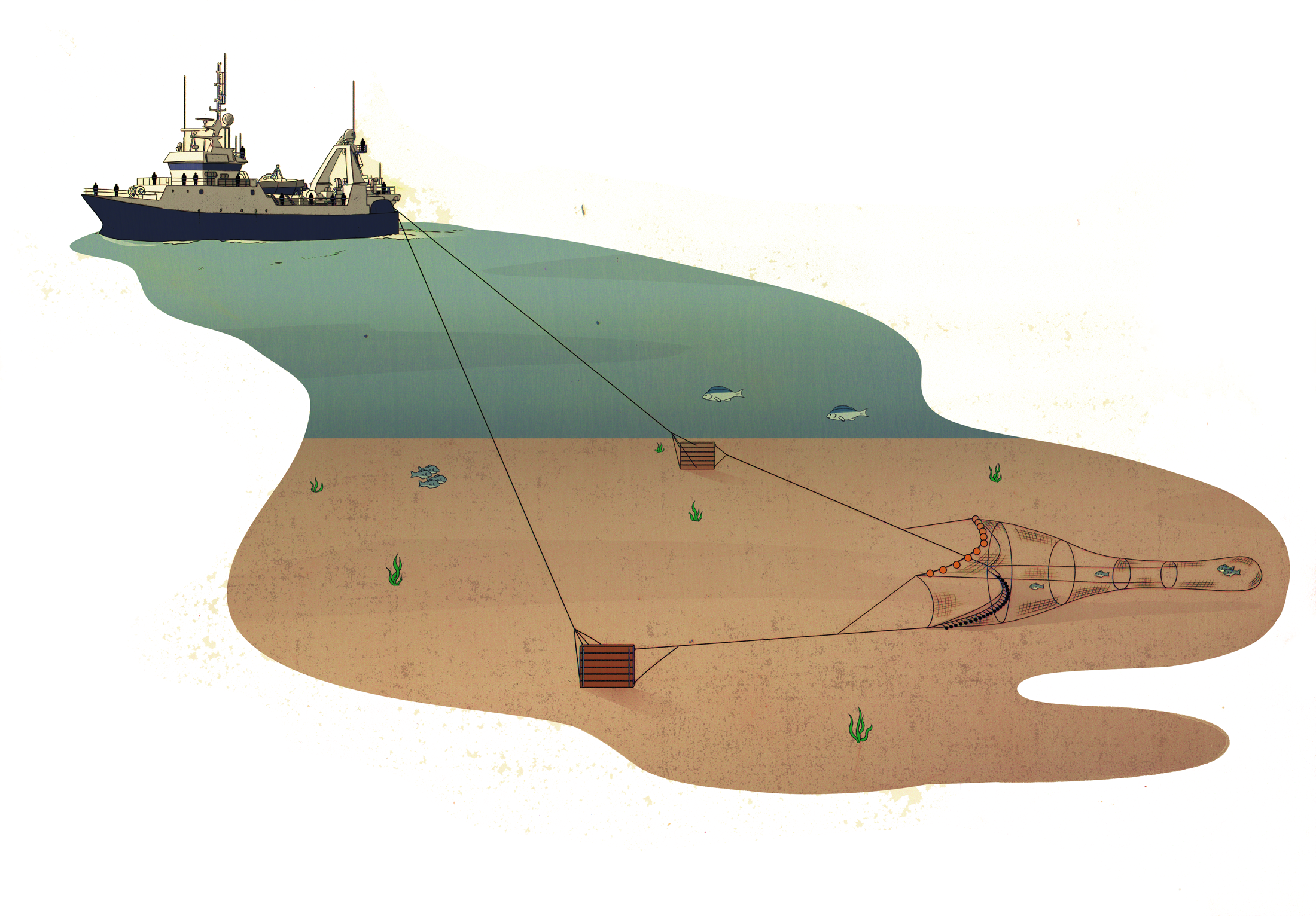
Trawlers are problematic for their bycatch. Fisheries observers operating on the B.C. coast say they consistently underreport the amount of bycatch brought in by trawlers due to intimidation and harassment. Illustration: Maria Nguyen / The Narwhal
Skippers and crews make their profit in a fine margin that exists between the cost of their quota (the fish they’re allowed to catch), the cost of their operating expenses, like food and fuel, and the money they can bring in by catching fish. Any additional expense, like catching prohibited fish and having to pay for extra quota, or having to move to a different fishing ground, cuts into profits.
“Morals and ethics don’t pay,” Eis says. “If you follow the regulations you make less money.”
Those who compromise their observers through bullying and threats avoid penalties, while observers who fail to do their jobs correctly are rewarded with bribes and a welcoming crew. Observers who try to report abuse say they’ve been ignored, belittled or fired. All the while, Archipelago gets paid as long as the fishermen are still leaving the harbour.
For Eis, the volume of halibut waste that day on the Raw Spirit, combined with what he felt was abusive behaviour on Andersen’s part, was a bridge too far.
“Something in my head just snapped,” he says.
He reported what happened to him on Raw Spirit to Fisheries and Oceans Canada and Archipelago Marine Research in early December 2018, days after it occurred. A government representative told him not to speak to the media, as did the trawl association and fishermen he trusted.
“Morals and ethics don’t pay.”
A spokesperson for Fisheries and Oceans Canada declined requests for an interview, saying an investigation is underway and the department could not comment on ongoing investigations. The spokesperson said the investigation “may cover multiple avenues of enquiry,” but would not address its focus.
In meeting notes obtained by The Narwhal, the department says it is “investigating several observer treatment [incidents].”
In a meeting with The Narwhal, Archipelago managers refused to discuss the halibut incident, also citing the ongoing investigation, though Stebbins called it “a one-time occurrence.”
Eis says his efforts seemed futile. “Every step of the way, I felt that I was just squashed.”
After waiting a year for the responsible parties to take action, he agreed to speak with The Narwhal.
Eis says his experience with Andersen made him determined to make things right, even if it cost him his job. His last shift as an observer would be the trip on the Raw Spirit.
But according to interviews with other observers, the kind of pressure Eis faced is not uncommon. Many named Andersen as the worst perpetrator, but other skippers and ships were named in interviews as well.
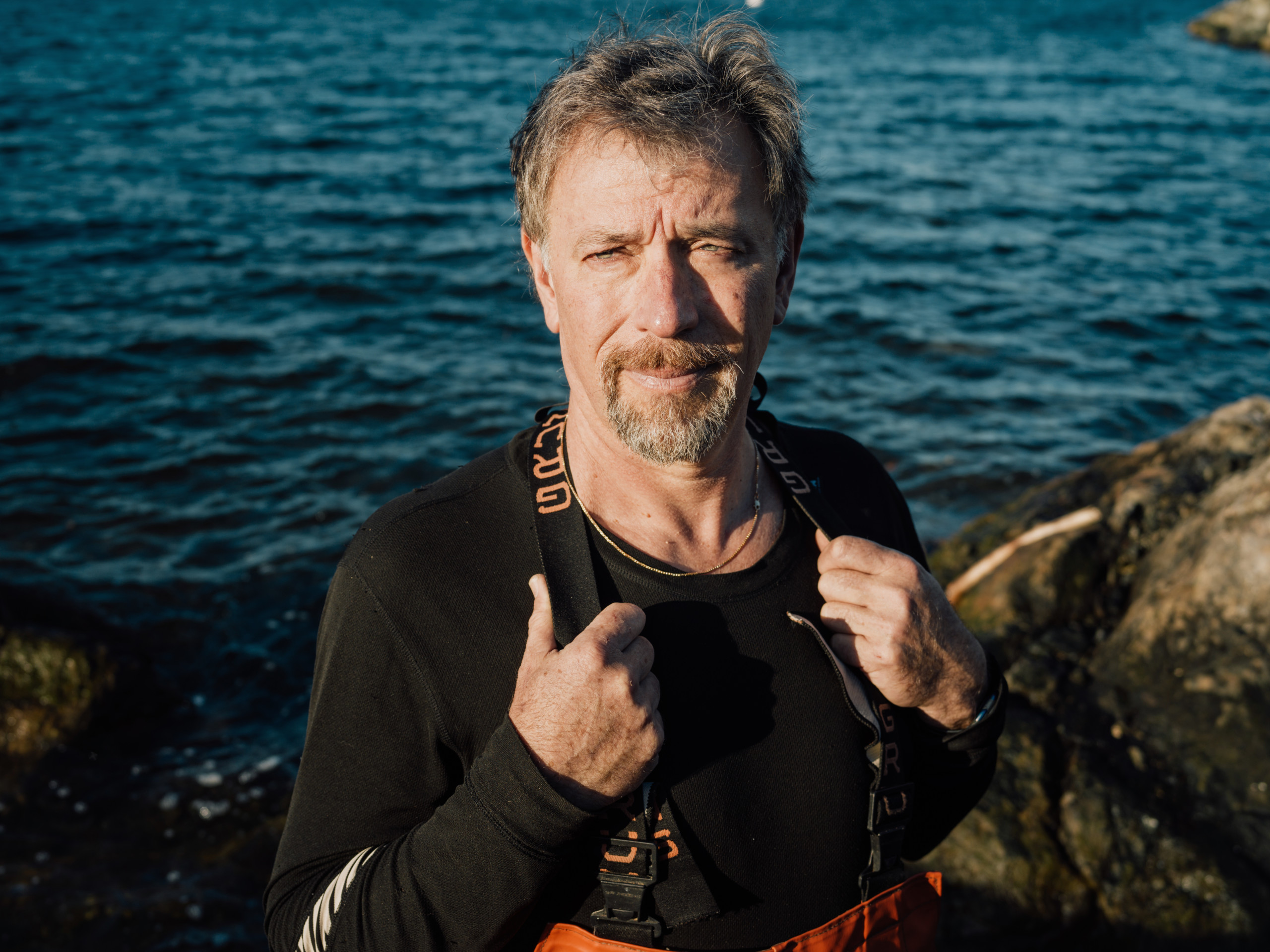
Eis said he brought concerns about observer independence to Fisheries and Oceans Canada and after waiting one year, saw no response being taken. He has since come forward as a whistleblower. Photo: Taylor Roades / The Narwhal
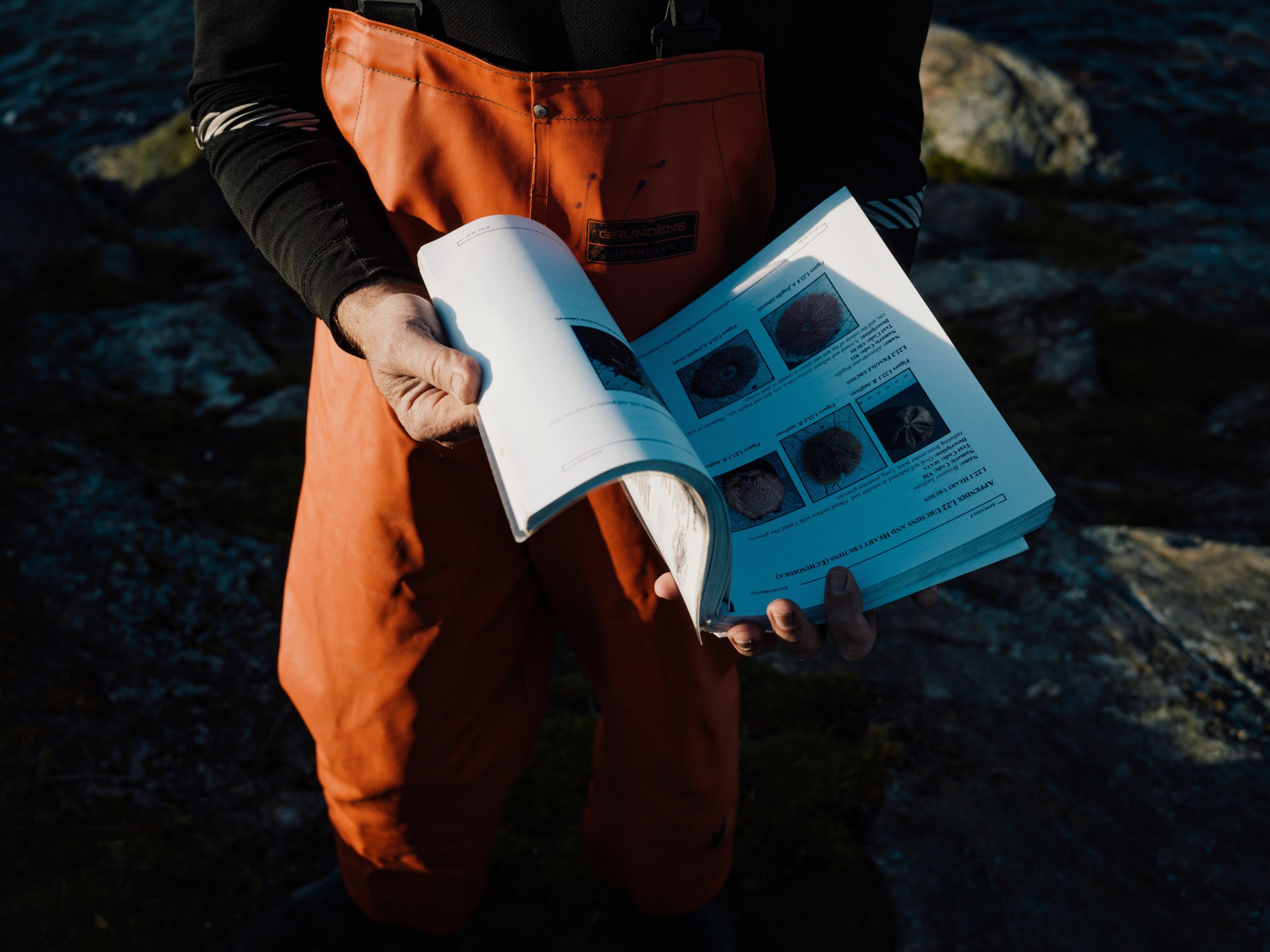
Eis flips through a species identification booklet at a beach in Victoria, B.C. Observers are responsible for taking biological samples and reporting the catch of prohibited species. Photo: Taylor Roades / The Narwhal
Brian Mose, head of the Deep Sea Trawlers Association of British Columbia, is a fifth-generation fisherman. He grew up “crawling around the deck” on fishing boats, eventually buying two of his own as a teenager.
Today, Mose owns multiple boats in the trawl fleet as well as a hook-and-line fishing boat.
“This is more serious than a heart attack for us,” he says of the mounting concern about abuse of the observer system.
“If it’s possible for one, it’s possible for all,” Mose says. “We’ve identified three, four, five others.”
Despite the accusations against Andersen, which are well known throughout the trawl industry, he continues to sit on the trawl association’s board. “Legally, he has not been charged,” Mose says. “And there is nothing that we can prove to have him removed as a director.”
The at-sea observer program is a system Mose actually fought against for years as a fisherman. He and Bruce Turris, a former Fisheries and Oceans Canada economist, are inseparable today but “weren’t the best of friends” in the early ’90s, he says.
At that time, industry was running roughshod over fish stocks and habitat. From 1980 until 1995, when the fishery was suspended, the trawl industry exceeded the maximum allowable catch every single year. In 1986 and 1987, the fishing fleet caught more than double the total amount of fish it was allowed to catch, overshooting by about 3,000 tonnes each year. Since data collection was spotty, the actual figures are likely much higher.
Turris, at that point in charge of the fishery, concluded the only solution was to shut it down.
Trawlers were furious.
“We were in denial,” Mose says. “We thought the actions Bruce was taking were in excess of extreme.”
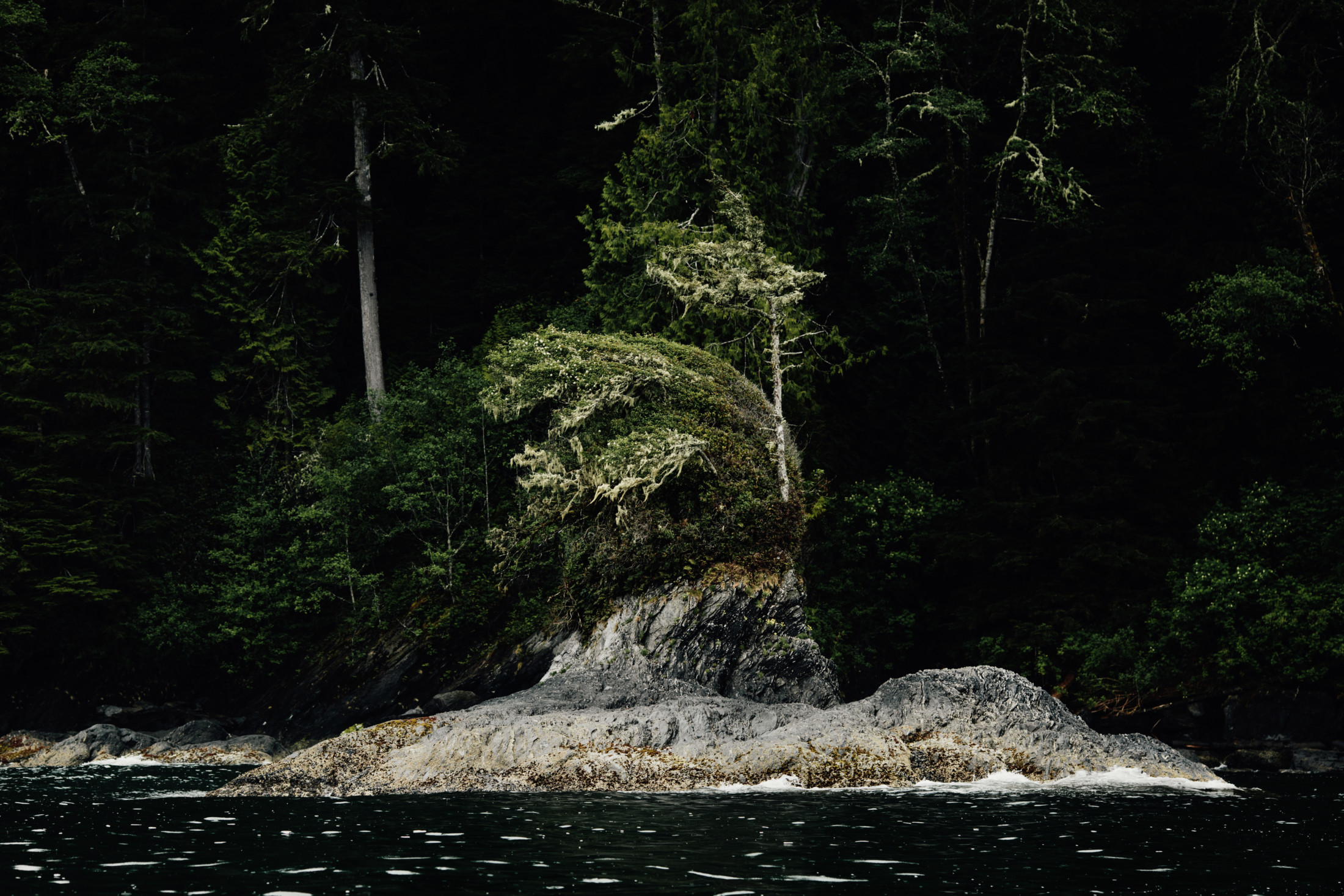
Every year from 1980 to 1995 the trawl industry exceeded the amount of allowable catch. The fisheries observer program was implemented in 1995 as a solution to the problem of over fishing. Photo: Taylor Roades / The Narwhal
The fishery reopened nearly five months later with one major change: there would be observers aboard the trawlers and others at shore to monitor the fish as it came in. The fishing companies would pay Fisheries and Oceans Canada, which would cover a third of the cost and contract the observers, ensuring their independence from industry.
Observers were offered as a catch-all solution to a number of problems: they’d monitor species and bycatch, improve the behaviour of fishermen and improve the quality of data the government used to set quotas. Resellers would know their seafood is sustainable. And the public would know their resources are being protected.
Over time the fishermen themselves would come around. While Mose once fought the system, he now defends it as indispensable to protecting the industry. He says fisheries managers come from all over the world to see how things are done in B.C. — and multiple statistical analyses have not found any evidence of systemic under-reporting of bycatch.
“We had gone from a complete absence in confidence in the data to now feeling that we had improved it enormously,” says Turris, who now heads up the Canadian Groundfish Research and Conservation Society. Andersen also sits on the society’s board, despite members questioning his suitability for the role.
But the system relies on the ability of observers to report what they see as accurately and honestly as possible.
The observers say in many cases they can’t live up to that standard, and that the public’s trust is misplaced.
“It makes you question the reliability of claims of sustainability of these fisheries,” says Misty MacDuffee, a conservation biologist at the Raincoast Conservation Foundation.
Rules on what areas to open and close, what fish stocks to harvest or protect or what habitat to conserve in the name of sustainability can have dramatic effects on the fishermen and their livelihoods. Before the observers, the extra pressure from those decisions could be sloughed off; reporting was effectively optional, with devastating consequences for the environment.
But now that pressure falls squarely on the shoulders of the observers. Each time a trawler brings in a net full of prohibited fish, the observer is now required to make a difficult choice: report it — or don’t.
In the early 2010s, Matt McKay was among the most experienced observers working for Archipelago Marine Research at sea.
“I’m a bit of a fish geek,” he says. “My species counts were always through the roof.”
If McKay didn’t know what species a fish was, he would put it aside for later then run through guides to figure it out. It slowly made him an authority on identification, and an excellent observer, according to others who crossed paths with him. He would regularly be invited on research trips, a sure sign of his expertise.
Archipelago sent McKay out on the factory trawler Viking Enterprise, the first ship of its class to be based on the B.C. coast, as a test. McKay was to help the company work out how to monitor ships like the Viking Enterprise that were to arrive in its wake — there would eventually be six.
He was shocked at how the vessel operated. As the sole observer working among 20 or more crew, he was intimidated and outnumbered. Crews worked 24 hours a day, so he found it impossible to both do his job and sleep. Still, he tried his best to diligently report on the ship’s discards.
The skipper was Andersen, who McKay describes as “one of the skippers who will try to tell you what to write down.” McKay doubled down on his duties, working 18 hours a day to monitor as much as possible of what was happening on board. He measured more than 500 halibut by hand — an unheard-of level of granularity — to make sure he had as much evidence as he could.
When he returned to Archipelago to debrief on what he had learned, he told them because of the nature of the ships, with upper and lower decks active at once, they needed two observers on board to make sure there could be enough coverage.
The Archipelago executives say they agreed with McKay, and passed the recommendation on to Fisheries and Oceans Canada.
But for reasons unknown to Archipelago and McKay, the recommendation was never brought into effect.
What did happen was a continuation of a culture of harassment that would force Eis and many others to under-report their numbers, McKay says, but now complicated further by the challenge of monitoring a giant ship without access to the whole vessel at once.
He says he faced regular bullying and threats from fishermen.
“They’ll say, ‘People disappear at sea all the time,’ ” McKay says.
Worldwide, at least half a dozen observers have gone missing under mysterious circumstances, and there are likely more, says Liz Mitchell, president of the Association for Professional Observers. At a 2013 conference in Chile, she says, she learned of three more disappearances that had occurred there.
“Everywhere they go, observers get harassed,” she says. “[Abusers] get away with it because most people don’t even know what an observer is.”
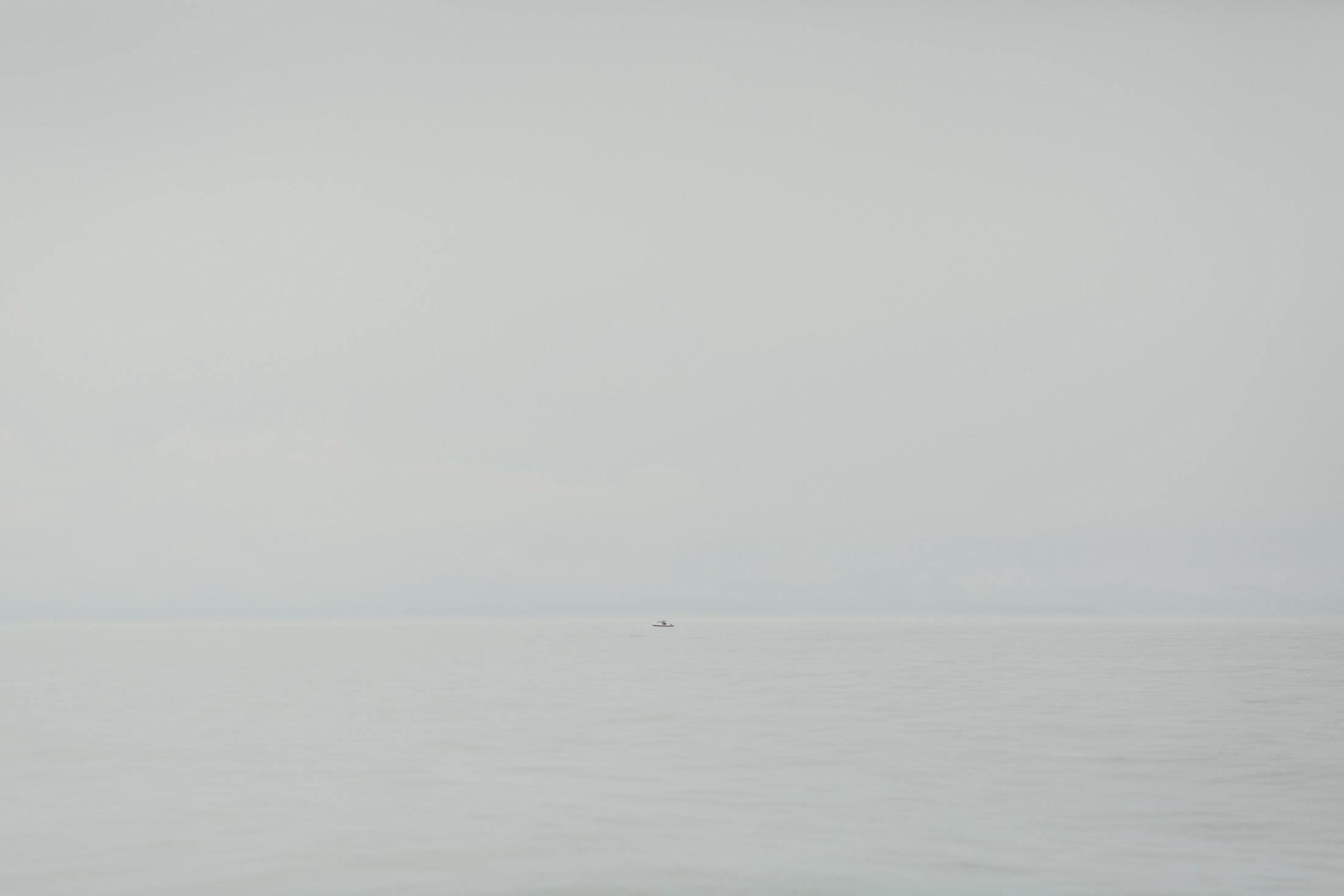
Former observer Matt McKay said observers are vulnerable at sea where he faced regular bullying. McKay said he has been told, ominously, that ‘people disappear at sea all the time.’ Photo: Taylor Roades / The Narwhal
Protecting the fishery was what inspired Kate Ramsay (her real name is being withheld upon her request) to become an observer — to “save the world,” she puts it. Like many observers, Ramsay only lasted six months on the job. That’s above average for an industry that chews through dozens of observers each year.
Archipelago says it has about a 40 to 60 per cent annual turnover, and insists that is normal for a fisheries observer company.
Even in her six months, though, Ramsay felt the pressure. She says it would come in the form of carrots and sticks — bribes for doing what the crews wanted, a lack of work for those who didn’t. Or worse.
“If you change your numbers … [the fishermen] give you free fish, give you money,” she says. “If you say no, they’ll blacklist you.”
She was aware that changing the documents could be considered fraud. As legal documents, the reports she filed would be relied on by the government to set quotas, and by scientists to do stock assessments. They are the basis for much of what the government and public think they know about many fisheries.
“I do know of observers who have gotten too scared to not change their numbers,” she says. “They’re too scared of what the fishermen will do.”
She was finally driven to quit, soon after a trip on the Raw Spirit. She says the factory manager would demand to see her notes, pressuring her to change her numbers; the crew would dissuade her from visiting the factory part of the ship because there was “nothing new to see;” they would hide things from her and accuse her of double-counting. The harassment escalated.
“It’s left an impression on me that I still haven’t shaken several years later,” she wrote in an email following her interview with The Narwhal.
Ramsay felt the company did nothing to assure her they were taking her concerns seriously.
“Archipelago just laughed when I called them to talk about my experience,” she wrote. “They have a really hands-off approach. There’s almost no follow-up.”
Stebbins of Archipelago says “if it’s accurate,” such a lack of response on Archipelago’s part would be “grounds for dismissal of the person they reported it to.”
Some observers say raising concerns with Archipelago often resulted in no action; others reported losing work.
The company says it’s possible they neglected to “close the loop” and inform the observer of what action had been taken. None of the observers The Narwhal spoke with could recall any concrete action the company had taken to rectify the problems they had reported, besides preventing one observer from working on the same ship in the future.
Andersen, the skipper, was independently named by five different observers as having been abusive and unethical toward them while aboard the Raw Spirit and Viking Enterprise. Archipelago says it is aware of the allegations.
Archipelago continues to provide the Raw Spirit and Viking Enterprise with observers.
In his sole emailed statement, Andersen said, “I am deeply committed to actions that support the integrity of the At-Sea Observer Program and its continued development and improvement, as I have been since its inception in 1996.”
Several observers and fishermen pointed toward a specific moment when things took a turn for the worse: in 2012, when facing budget cuts by the Stephen Harper government, Fisheries and Oceans Canada backed away from its role as the intermediary for interactions between fishing companies and Archipelago.
The department also stopped paying part of the cost of the observer program.
In 2013, fishing companies began dealing directly with Archipelago, and became responsible for paying 100 per cent of the cost.
A 2016 report from the Auditor General of Canada examining Fisheries and Oceans Canada’s monitoring of nine of the fisheries under its jurisdiction (trawling was not among those looked at), identified some of the wider problems with the observer system.
The audit found that the 2012 cuts are where things went wrong, writing that the department had put itself in a position where its only recourse against offenders was to revoke their licences, which would rob the department of the data it needed to do its job. No Pacific region observer company has ever had its licence revoked by Fisheries and Oceans Canada.
The audit went on to say the government had identified “a serious potential conflict of interest” for at least four companies that monitor fish catches, but that it had done nothing to mitigate the problem.
Of its three major divisions, fisheries monitoring makes up the largest percentage of Archipelago’s annual revenues. Archipelago says since at least the early 1990s, it has never permanently removed a ship or skipper from observer coverage, though Stebbins says when there have been major problems with a skipper, the companies that own the ships have solved the problem “quite quickly” by removing staff to protect their investments.
Archipelago denies the suggestion that its dependence on revenue from the ships it is supposed to be monitoring constitutes a conflict of interest.
“The only reason we’re generating revenue is because we’re providing an arm’s-length service. That’s the basic tenet of our service,” Stebbins says.
“Do we have complete control over every one of our employees? No. But we do the best we can.”
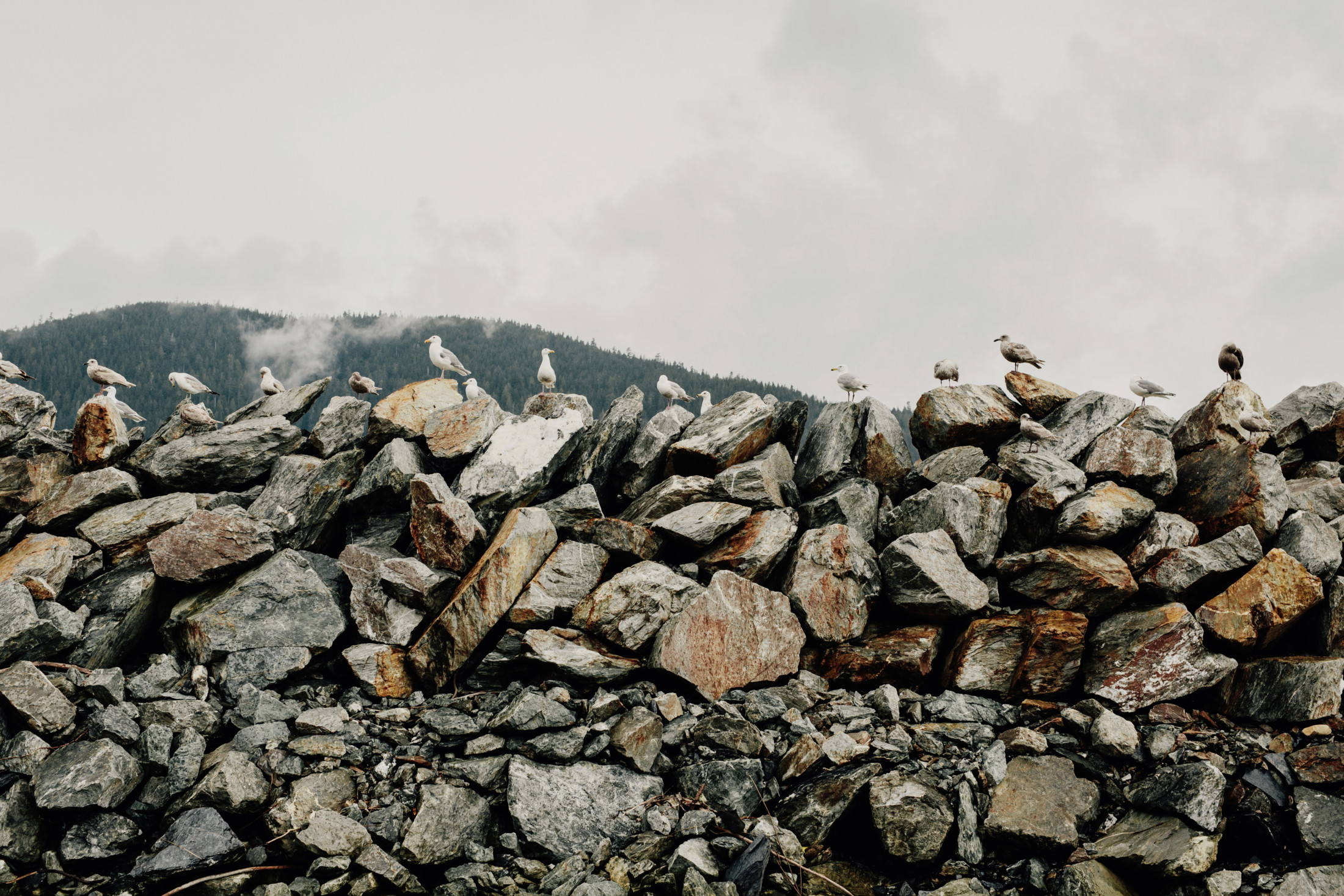
A report by the Auditor General of Canada found problems were introduced to the observer program in 2013 when fishing companies became directly responsible for its funding. Photo: Taylor Roades / The Narwhal
On a rainy day this past February, Turris, Mose, Wallace and Andersen gathered in a room at Simon Fraser University’s downtown campus in Vancouver, alongside other industry representatives and Fisheries and Oceans Canada officials, to discuss the upcoming year.
They were there to talk about the usual items (catch limits, marine protected areas, logbooks), but the one topic that got more time than any other hadn’t even been on the agenda until a week prior: the simmering crisis of observer abuse.
The Narwhal was not permitted by Fisheries and Oceans Canada to attend the meeting, but later obtained the meeting agenda and notes, and spoke with attendees.
Everyone at the meeting was aware that Eis, who had already contacted Archipelago, Fisheries and Oceans Canada and even the David Suzuki Foundation, had gone to the media and the story would become public.
“The sense around the room was that it’s not a broken system,” says Wallace of the David Suzuki Foundation. “There seems to be nothing wrong with the system on paper.”
And yet the observer complaints show the system, even with its built-in checks and balances, wasn’t working.
“It makes me almost nauseous that this happens. This undermines everything,” he says. “You’ve got these old-lived species, you’ve got endangered species, you’ve got habitat … you need the observer program to work.”
Fisheries and Oceans Canada presented a list of improvements that might plug some of the holes in the observer system, including new training to ensure observers know their rights and responsibilities. Conflict resolution training is also being added to the curriculum for new observers.
Archipelago brought in new bullying policies with new ways to report problems up the ladder.
While these fixes rest on the shoulders of the observers, other measures appear poised to curb these pressures.
Cameras and other sensors have been installed on seven trawlers to measure when gear is moving, where fishing is happening and the fish sorting process as part of an electronic monitoring pilot program.
The captured data is randomly compared to observer reports, and fish discards have to match up (within a generous margin of error). If it doesn’t, the logbook is scrapped and the fishing company has to pay for an audit of the entire trip using only the electronic data, which could carry a hefty price tag. According to Archipelago, no fishing company has had to go through that process yet. Even so, the very presence of video footage has the potential to take the heat off individual observers.
“As the fishery changes, the different pressures change out there for at-sea observer staff,” explains Scott Buchanan, director of fishery management programs for Archipelago. “There can be a lot of pressure on observers, so it’s important that the structure of how this works is designed so that that pressure can’t be applied, and they can do their job properly.”
As one fisherman put it: “You can’t bully a camera.”
There’s another proposal in the works that could also alleviate some of the pressure on observers, one that would allow trawlers to keep 100 per cent of the rockfish they catch — even if it’s not on their list, even if they don’t own any quota for it.
As a deep-dwelling fish, when rockfish are brought to the surface they often die, their swim bladders popping out of their mouths as they expand. Throwing them back is frequently a futile exercise. Forcing fishermen to retain the fish would change two things: first, it would mean the pressure was no longer on the observer to look the other way, and second, it would mean the skipper would be better off moving his boat to a different area to avoid the cost of the extra fish.
After the government removed observers in April due to the coronavirus, the industry responded by asking that the adoption of electronic monitoring be accelerated, and that 100 per cent retention of rockfish be implemented immediately. Rather than taking the opportunity to weaken regulations, Mose and Turris and the fishermen they represent sent a letter to the government asking for tighter monitoring.
The proposal McKay made after his first test trip on the Viking Enterprise — that there be two observers on the large vessels, standard practice in Alaska — is still not on the table. Also standard practice in Alaska is providing observers with communication tools like encrypted text messages and personal locator beacons so they are not dependent on the ship’s own systems to communicate with the authorities in serious situations.
Archipelago said providing its observers with satellite phones is a possibility.
“It could come to that, I guess,” Stebbins says.
Fisheries and Oceans Canada is considering improvements to the fisheries observer program to make the work more safe for individuals. It is not standard for fisheries observers in B.C. to be outfitted with personal locator beacons, which could provide a safe and secure form of communication. Illustration: Carol Linnitt / The Narwhal
Brian Dickens can still remember steaming back toward Prince Rupert with 150,000 pounds of perch, at 15 years old, thinking about the 80-odd people the fish would employ at the end of its journey.
“I was so proud,” he recalls. “There was huge, huge honour in fishing.”
He still feels proud of what he does, and has been described by people throughout the industry as honest and reliable. When The Narwhal spoke with Dickens, he was unloading a similar load of fish — 120,000 pounds of rockfish — from his boat, the Nordic Pearl. Among all that fish, he says he caught and discarded just 16 halibut.
Dickens, now 63, grew up around the same time as Andersen, fishing the same waters. At that time, nobody believed they could harm fish stocks; it was an infinite resource, invincible to the nets and hooks by force of sheer numbers.
“Some of us have grown out of that, and some of us haven’t,” he says.
The reality is that every fish killed incidentally is a lost chance to reproduce, or to feed the predators and scavengers of its own habitat rather than feeding the birds and sea lions at the surface.
For those fishermen who believe bycatch is not a significant problem, he says, the challenge is not to avoid waste — it’s to avoid getting caught.
“There’s a culture that has developed. It hasn’t developed because these people are evil, it’s human nature,” Dickens says. “If you can get away with it, that’s what you’re going to do.”
Human nature, in all its predictable excesses, also explains why Kelly Andersen is, at the time of writing, in Denmark: he’s buying a bigger ship.
The vessel is a factory trawler with twice the power of the Raw Spirit and 15 per cent more capacity. Most significantly, it will be the first in the province to house a reduction plant, capable of rendering fish down into anonymous fish meal long before the ship ever reaches shore.
“I just don’t believe that he’s the right kind of person to have that kind of power,” Dickens says. “Kelly Andersen is seemingly operating with impunity.”
As with Raw Spirit, Andersen has partnered with the Canadian Fishing Company to buy the new ship.
Phil Young, senior director of sales at the company, says he hasn’t heard anything that makes him question the wisdom of doubling down on the company’s investment with Andersen. Nothing official, anyway.
“Have we heard rumours? Yeah,” he says. “Rumours are rumours.”
The ship’s other co-owners are equally reluctant to take action based on what they see as a difference of interpretation. In an email, Theresa Williams wrote, “I believe it is impossible to know all the nuances of the conversations that may be at the core of the observer’s complaint from December 2018, and it’s fair to say that there is a difference between telling someone what to report and disagreeing with what they report.”
She said she is aware of a possible investigation from Fisheries and Oceans Canada, and that her company has taken steps to ensure its crew members understand the importance of preserving observers’ ability to do their jobs.
“If you can get away with it, that’s what you’re going to do.”
For the observers, the ability to make judgments independently of the crews they’re monitoring is a matter of safety and integrity. Those who are still in the business could see an improvement, but for the whistleblowers like Eis and McKay, the change is coming too late.
Eis says Archipelago never formally fired him; work just stopped arriving when he began fighting to fix the system. But the company has referred to him in communications with its staff only as a former employee.
Matt McKay, the self-described “fish nerd,” is now a mushroom picker.
Ramsay moved on to a related industry, as did others who spoke with The Narwhal. Some are still working for Archipelago.
Eis has found work, a few months out of the year, doing scientific fish surveys for the International Pacific Halibut Commission, an intergovernmental agency that monitors halibut stocks.
There, at last, he feels rewarded when he does his job, rather than when he doesn’t. It’s a job he believes is vital to protecting the future of fisheries, to making sure that when future generations put a line in the water they can catch something to bring home to their families.
“Once there’s nothing left in the ocean,” he says, “it doesn’t matter how good a fisherman you are.”
Update May 11, 2020 at 1:02 p.m. PST: A previous version of this story noted estimated worldwide bycatch was 10.3 million pounds per year. The correct amount is actually 10.3 million tonnes per year and the story has been updated to reflect that fact.
Update May 13, 2020 at 10:39 a.m. PST: This article was updated to reflect the fact that while observer reports can result in the shutdown of boats or even the entire industry, this power does not rest with observers but rather with Fisheries and Oceans Canada which has the authority to act on the information in those reports.
Get the inside scoop on The Narwhal’s environment and climate reporting by signing up for our free newsletter. When I visited my reserve, Moose Factory,...
Continue reading
The Conservative and Liberal parties diverge sharply on Indigenous issues. Here’s what that could mean...

After a series of cuts to the once gold-standard legislation, the Doug Ford government is...

The BC Greens say secrecy around BC Energy Regulator compliance and enforcement is ‘completely unacceptable’

